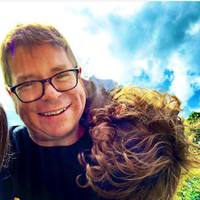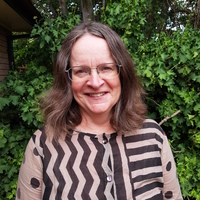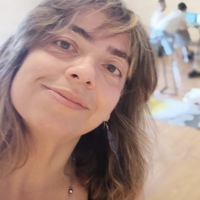Papers by Cameron Cartiere
Public Art Dialogue
For issue 8.2, Public Art as Political Action, we opened our editorial with the observation that ... more For issue 8.2, Public Art as Political Action, we opened our editorial with the observation that Americans were up and on the move as a result of the 2016 presidential election. Here we are, severa...
The Practice of Public Art
RACAR : Revue d'art canadienne, 2021
Public Art Dialogue, 2021
A visual timeline of significant contributions to Socially Engaged Practices. "All histories... more A visual timeline of significant contributions to Socially Engaged Practices. "All histories are subjective. We cannot hope to fully capture the timeline of socially engaged artworks over the past half- millennium, but we can present a highly subjective one that acts as a starting point for inquiry. In the spirit of the collaborative underpinnings of ‘new genre public art’ we present selected, intertwined histories chosen by five individuals. These individuals operate from diverse locations within the eld, and their selections reflect varied interests -- from activist to aesthetic, from historical to happenings. While the legacies of socially engaged art stretch back much further, the boundaries for this timeline are 1950 - 2015 to allow for a relatively focused chronology of an already complex and expansive topography"
Public Art Dialogue, 2019

Art & the Public Sphere, 2012
ABSTRACT As public art continues to serve as a cultural cornerstone in the regeneration strategie... more ABSTRACT As public art continues to serve as a cultural cornerstone in the regeneration strategies of urban areas across North America and the European Union, the need for quantitative data on the sustainable economic, environmental and social impacts to support the beneficial claims of art in the public realm is becoming increasingly imperative. While much has been written to explore the development and expansion of public art, particularly as an agent of urban change, little by way of substantive evidence exists to support the anecdotal evidence and qualitative observations that underlie the argument of public art as a sustainable vehicle for urban regeneration and social change. This article explores some of the assumptions regarding the long-term effects of public art in the urban environment and outlines the development of a multi-disciplinary project in Vancouver, British Columbia that is endeavouring to develop a series of socially engaged public art projects to lay the foundation for research that aims to garner valuable qualitative and quantitative data reflecting the influences of public art within Canadian urban society.
The Everyday Practice of Public Art, 2015
... We would particularly like to acknowledge and thank our research assistant Rosemary Shirley f... more ... We would particularly like to acknowledge and thank our research assistant Rosemary Shirley for her excellent work, and our indexer Noeline Bridge. Thank you to our editor Erica Wetter, editorial assistant Elizabeth Levine, and Max Novick. ...
The reclamation project Northala Fields in the London Borough of Ealing represents a successful m... more The reclamation project Northala Fields in the London Borough of Ealing represents a successful model of park design for the 21st century. The project combined an expansive earthwork with a practically functioning community green space at zero cost to the taxpayer. This paper explores not only the development of the park, but also the components that function in combination to generate the extensive community engagement and continual usage of the site. Northala Fields was a collaborative, interdisciplinary effort which follows a tradition of successful endeavours between artists and scientists, using new technologies to revitalise abandoned and contaminated sites. Several art/science collaborations are examined within the context of reclamation and creative innovation.
ABSTRACT The Manifesto of Possibilities Poster

Over the past decades, there has been a deepening relationship between participatory art practice... more Over the past decades, there has been a deepening relationship between participatory art practices and matters of social justice: this innovative approach to public engagement has resulted in many projects that aim to ameliorate complicated relationships, seek consensus and eradicate conflict. The social realm, however, is constructed of complicated relationships, conflict and dissensus: as Deutsche (1996) suggests-"Conflict, division, and instability, then, do not ruin the democratic public sphere; they are conditions of its existence." How, then, should participatory practitioners respond to the question of 'social justice' when such works are often predicated on eradicating the innate plurality within public, democratic societies? This paper presents new ethical and political understandings of the liberatory possibilities of participation, and gives the practitioners voice a much-needed platform in a field dominated by academic, policy and managerial frameworks. It highlights a lack of universal understanding of what it means (and how) to 'work with people' and argues for morenot lessconflict within participatory practices in order to counteract the 'social engineering' tendencies of governmental policies, cultural institutions and activist-led practitioners who would instrumentalise the practice in the name of an ill-defined and problematic concept of 'social justice'.
This research is an exploration of the development and influence of placespecificity within the f... more This research is an exploration of the development and influence of placespecificity within the field of new genre public art. Over the last several years the term place-specificity and its variance, place-specific has occurred frequently in art reviews and exhibition catalogues particularly in relation to installations, permanent public art works, and public interventions. While THE PARTICIPANTS 164
Journal of Public Works Infrastructure, Nov 1, 2009

The Journal of Public Space
The environmental problems of climate change and species decline can feel overwhelming. Individua... more The environmental problems of climate change and species decline can feel overwhelming. Individuals are often at a loss, questioning what impact they can actually have. Through chART Projects, we have witnessed the dramatic effect of community-engaged art as a direct path to environmental action and impact on local ecosystems. During the 27thInternational Ornithological Congress, bird enthusiasts from around the world focused their attention on Vancouver, Canada. This article is a reflection on how chART took advantage of this assembly, creating an ambitious venture aiming for a sustainable effect on the public’s relationship to urban birds. As the Crow Flies was a public art project bringing creative connections to urban birds directly into the hands of the public. Works included sited-sculpture, community-engaged interventions, projections, workshops, performances, and 6,000 ceramic crows. chART’s founder, Cameron Cartiere has been working with an interdisciplinary team to address...











Uploads
Papers by Cameron Cartiere
Topics include: constructing new models for developing and commissioning temporary and performance based public artworks; the social inclusiveness of public art; the radical developments in public art and social practice pedagogy; and unraveling the relationships between public artists and the communities they serve.
Complete with a visual timeline providing historical context, The Everyday Practice of Public Art is an essential guide to the increasingly complex nature of artists practicing in the public realm in the twenty-first century.